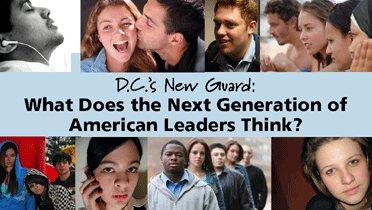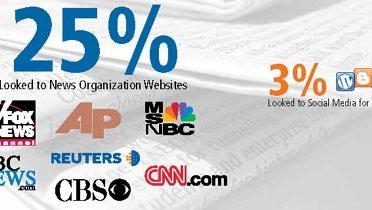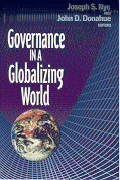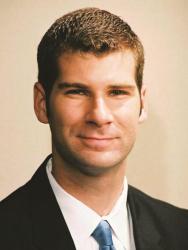New Survey Finds that the Next Generation of Young American Leaders Admire FDR and Obama, Don’t See Celebrities, Pundits, or Sarah Palin as Their Role Models
The year 2011 is important in many ways, but perhaps the one that history may record as most important is that this year is when the “Silver Tsunami” hit. In 2011 the Baby Boomer generation that has so dominated American politics and society first became eligible for retirement. But little is known about the new guard of American leaders, the Millennial generation (born between 1980 and 2005) who demographically number more than the Baby Boomers and three times the size of Generation X. They have already made their power felt in everything from the Facebook phenomenon to the unlikely rise of Barack Obama to the presidency, and are only just now entering the scene. But what comes next?
Over the last year, my colleagues and I surveyed about 1,000 young Americans from around the country, sourced from organizations like the National Student Leadership Conference and other young leader programs. Our goal wasn’t to get overall youth attitudes, but to capture what the most likely young leaders of tomorrow think. That is, while we can’t be certain that this pool of over 1,000 young Americans definitively has a future president, senator, ambassador, or chairman of the Joint Chiefs of Staff in it (though it is important to note that a number of past and current presidents, ambassadors, generals, and senators would have been captured in similar studies at this very same point in their youth), it is a group composed of youth who already have the “Washington bug” and are planning careers in politics and policy.
One of the aspects that is perhaps most timely—considering this week’s celebration of past presidents and the seeming start for many 2012 Republican candidates at CPAC—was a series of questions about whom the youth of today see as an ideal leader. Role models can not only steer who they might work for on future campaigns, but also have a huge influence on the type of leader they become later on. Youths’ role models also illustrates the way they see the world and what values matter most to them.
So we asked the young leaders an open question: “Which historic figure do you think most personifies the sort of leadership necessary for the 21st century?” They could chose literally any person from all of history, so the responses varied widely, with Franklin Delano Roosevelt (15.6%) Abraham Lincoln (11.4%) and John F. Kennedy (9.9%) being the top vote-getters. Perhaps more interesting though was when the responses were divided into categories of historical circumstances and responsibilities. Just under 36% of the young leaders picked a military leader or civilian leader closely associated with wartime as their ideal model, like Roosevelt, Lincoln, or Eisenhower. This is less surprising than it might seem when one factors in that the United States these young leaders have grown up in has actually been at war for a majority of their lives. Fourteen percent chose a Founding Father such as Jefferson, Monroe or Hamilton. Another 10% chose leaders of social change such as Martin Luther King, Jr., Nelson Mandela and Gandhi. Contrary to how the issue is sometimes dealt with in interviews of adult leaders, only 1% suggested that a religious figure such as Mother Theresa, Jesus, or the Prophet Mohammed personified the leadership needed for the 21st century.
Contemporary leadership models speak equally to what appeals to and what will shape a young leader. We therefore asked the open question, “Which current figure do you think personifies the sort of leadership necessary for the 21st century?”
The results were striking, especially in comparison to the spread across historic figures. More than 49% chose Barack Obama, well past any other leader named. Interestingly, of the young leaders who chose Obama as their ideal leadership model, 62.8% were young Democrats, 28.5% were Independents and 8.7% were Republicans. The next closest leader named was his 2008 campaign opponent John McCain with 5.5% favoring him as their model leader. Al Gore, Bill Clinton, Colin Powell, Condoleezza Rice, Nelson Mandela and Hillary Clinton were the other leaders who were listed as models by between one and five percent of the youth in the survey.
Just as intriguing as those who were viewed as ideal 21st-century leaders were those who did not make the cut, often contrary to media depictions. Only 3.4% of the young leaders chose an individual who could be described as a celebrity (Bono being an example) as having the type of leadership skills they saw as needed in the 21st century. Only 2.8% chose a military leader (notably, General David Petraeus, who is often depicted as a potential future presidential candidate in the media, received only one vote from the young leaders; Admiral Michael Mullen had three); only 2.1% chose a businessmen (Bill Gates leading this category with six votes); and just 1.2% chose a political pundit (Glenn Beck and Jon Stewart leading this category with two votes each; Rush Limbaugh with one). Notably, only nine out of the 1,057 young leaders in the pool (of whom about a third were young Republicans) identified former vice presidential candidate Sarah Palin as their ideal leader for the 21st century.
People will certainly draw all sorts of conclusions from these data, but they certainly shine a light on the type of young leaders America is now producing and who they hope to become in the years ahead.
These data are further discussed in the report, “D.C.’s New Guard: What Does the Next Generation of American Leaders Think?” by Peter W. Singer, Heather L. Messera, and Brendan Orino.










Commentary
Who America’s Next Generation Wants to Be
February 23, 2011